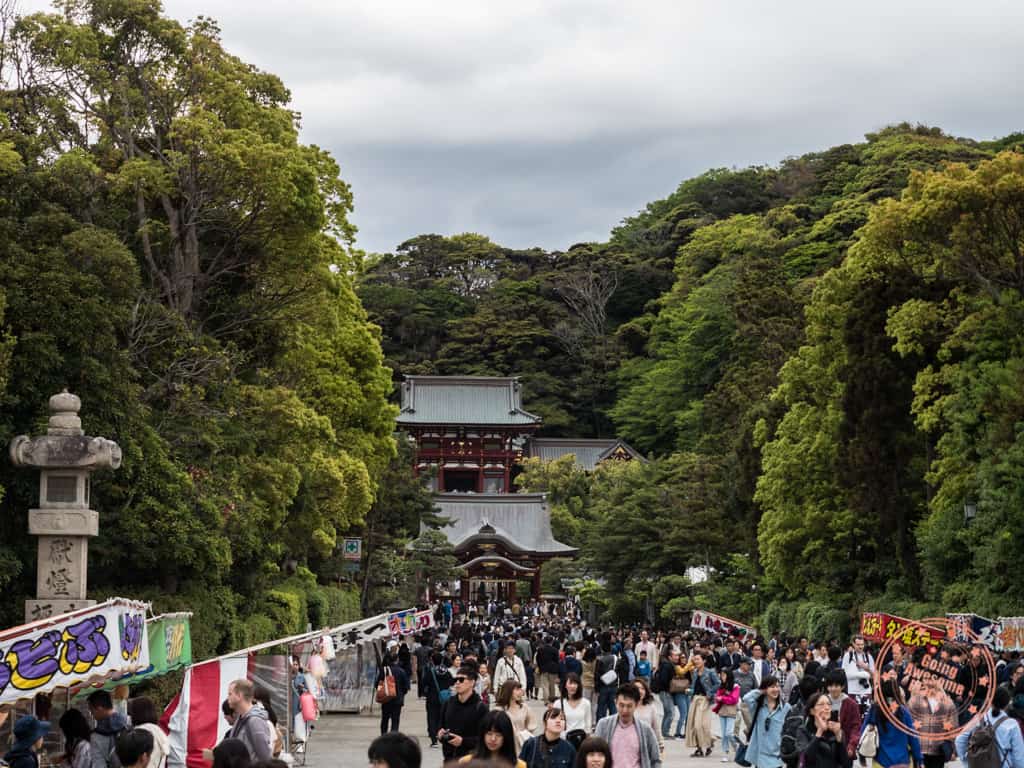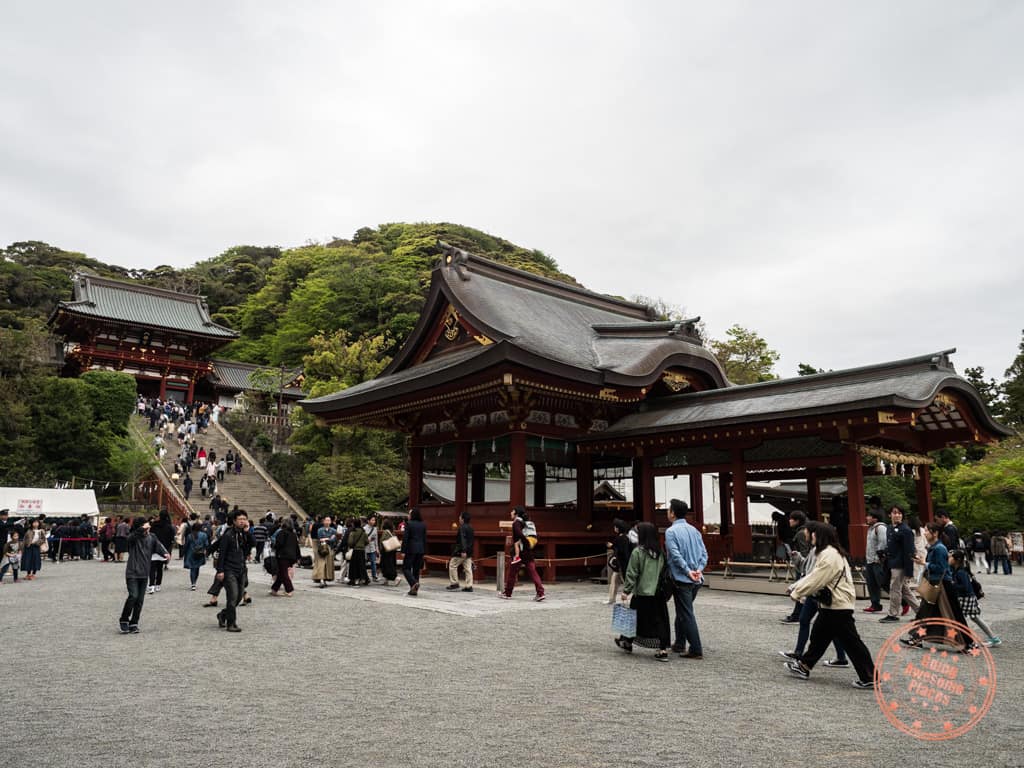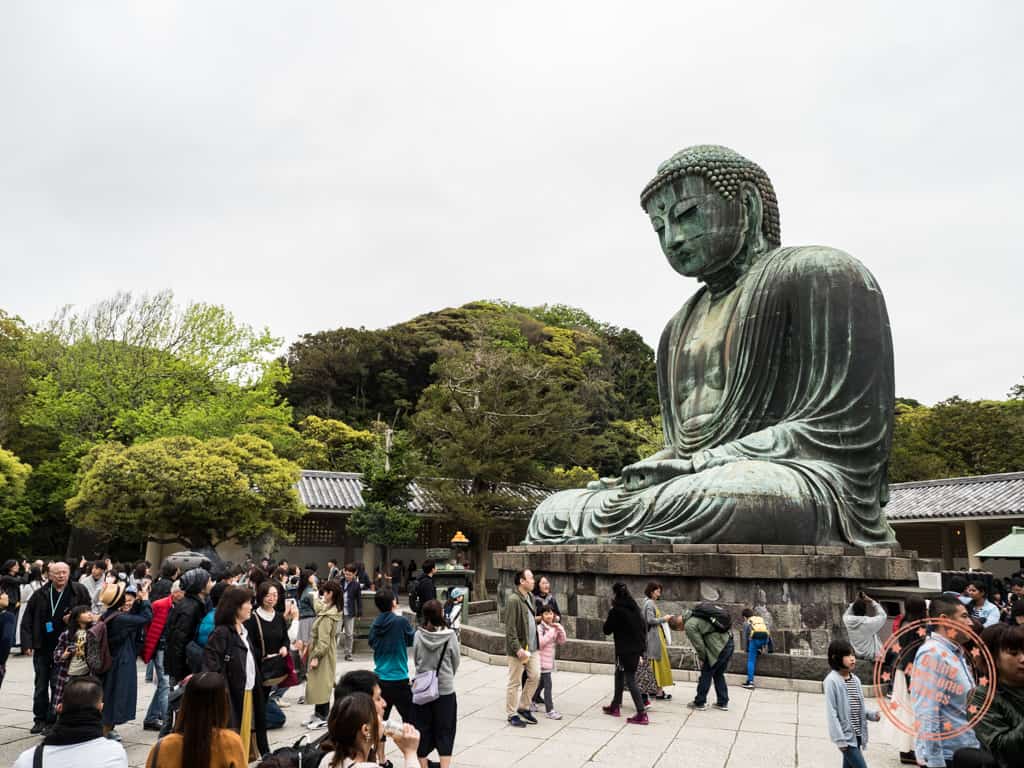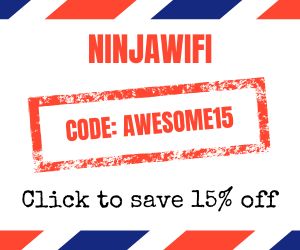When planning your trip to Tokyo and looking for iconic experiences that’s easy to do and is easy to do in less than 10 hours, you have to consider a Kamakura day trip and I’m going to tell you why.
Read more about Tokyo
- Tokyo food guide – must-eat places when you go
- 12 days in Japan itinerary
- Best ramen in Tokyo
- Souvenirs to buy before you leave Japan
Where to stay in Tokyo?
- Make sure you read the Tokyo neighbourhood guide on where to stay. Keep your eyes peeled for killer Airbnb deals and also Booking genius deals.
Table of Contents
Looking for something specific in this guide? Jump to the section that you’re interested in.
In This Article
Kamakura Day Trip

A little about Kamakura
Kamakura is a coastal town located just less than an hour south of Tokyo in the Kanagawa Prefecture. It was once the political center and population in between the 12th and 14th centuries in what was known as the Kamakura period.
The city’s political power waned by the 14th century but because of its historical significance, Kamakura has become a popular destination for local and international visitors because of its impressive shrines, temples, and historical monuments.
Some have even gone as far as calling Kamakura the Kyoto of Eastern Japan with sights like Tsurugaoka-Hachimangu Shrine and the Great Buddha.
Whether it’s your first time visiting Tokyo or you’re a couple of times in, I’ve always found it a nice balance to incorporate day trips to your itinerary to change up the pace and scenery from the hyper metropolis.
This could include places like Hakone, Kichijoji, or Yokohama but somewhere that I always recommend especially if you don’t have enough time to make it to Kyoto is to fit Kamakura into your vacation plans.
Kamakura Day Trip Itinerary

Let’s dive right into what a day trip itinerary to Kamakura looks like. This comes directly from personal knowledge and experience so you know it’s legit.
Mid Morning – Make your way to Kamakura
Your timing will entirely depend on your group and how early you want to start but there’s no real rush so take your time. As a guide, I’d leave Tokyo around 10:30AM.

Tokyo is connected with Kamakura via the JR Yokosuka Line, JR Shonan Shinjuku Line (may require change in Ofuna), JR Tokaido Line (this one requires a change in Ofuna), and Odakyu Railways . The line you choose will honestly depend on which station you’re closest to but without making things complicated, your best bet is to use Google Maps so that you know which platform to hop on and which one will get you there the fastest. More details on this in the travel tips section.
Which apps should you download before going to Japan?
Your final destination is Kamakura (not Kita-Kamakura).

Once you get off the train, look for the East Exit which will take you towards Tsurugaoka Hachimangu Shrine. Don’t worry, we’ll get back to the Big Buddha later.
Mid Morning – Explore Komachi Dori

Once you pop out of the train station, you’ll be immediately drawn towards a torii gate welcoming you with open arms. This is the primary pedestrian promenade that take you up to the shrine.

You’ll have important business on Komachi Street because you’ll be in for a feast for your eyes and stomach. This area is known as Komachi Dori.
On this street you’ll find everything from restaurants, confectionary shops, bakeries, snack shops, convenient stores, unique souvenir boutiques, clothing stores and more.
Things to pay attention to is the popular ca ca o, Kamakura Ichibanya with their freshly made crunchy rice crackers, matcha ice cream shops such as Kamakura Chacha, pastry desserts at Hachi, and lastly Sawawa and their chewy warabimochi.






Wander and get distracted. That’s one of the beauties of Kamakura.
Late Morning – Arriving at Tsurugaoka Hachimangu Shrine

You’ll finally reach the entrance to this famous shrine and it’s here that you’ll want to do a full 360 degree turn because if you look down the long and wide avenue and their multiple torii gates that was built as a processional entrance.
The shrine dedicated to the god Hachiman was founded in 1063 by Minamoto Yoriyoshi, the first shogun of the Kamakura government and his descendant Yoritomo, moved to its current site in 1180 so there’s an incredible amount of history here.
Flanked on both sides of the entrance are two ponds. This is also where you’ll find a garden known for its peonies and costs 500 JPY to enter.

Keep walking further in and you’ll reach the smaller shrines at the base and also an open pavilion called Maiden where dance performances take place.

To the left you’ll also find a giant bookcase of sake barrels which is always great for photos.
Take the stone staircase up and you’ll reach the shrine itself. There’s also a museum here devoted to its history.
There’s a lot to explore here but you can choose to see as much or as little as you’d like.

If you’re still hungry after all of your snacking earlier, you’ll often find food vendors in the grounds of the shrine near the entrance. Since there won’t be an official lunch stop, this might be the best place for it to rest after all of that walking and try delicious dishes.
WHAT YOU NEED TO KNOW
Address: 2 Chome-1-31 Yukinoshita, Kamakura, Kanagawa 248-8588, Japan
Hours: 5AM – 9PM April to September, 6AM to 9PM October to March. Admission ends 30 minutes before closing. The grounds are open 24 hours January 1-3.
Website: Tsurugaoka Hachimangu Shrine
Price: Free to enter. Shrine museum is 200 JPY and gardens beside Minamoto Pond is 500 JPY.
Restrooms: Yes
Japan Trip Planning Essentials and Discounts
If you’re in the middle of booking your trip to Japan, here are the most important places you need to go to book:
- JR Pass – The two most reliable places we always check are JRailPass and JRPass. If you are taking long distance Shinkansen across multiple region, get the full JR Pass. If you’re focusing on one specific area, you only need a JR regional pass.
- Shinkansen – The JR Pass prices have gone up and for many of you, it’ll make more sense to book tickets individually. The secret is that when you buy your Shinkansen tickets through Klook offers special vouchers for Don Quijote and BIC when booking. Their tickets are super easy to redeem as well. Right now, use code SKS10OFF to save $10 USD off.
- Hotels/Ryokans – In Japan, the best website for accommodations, hands down is Agoda. When we’ve compared them against Booking, Agoda consistently came out cheaper.
- Tours – While Viator and GetYourGuide are our go-to’s, Klook and KKDay are much popular in Asia so it’s always worth comparing across all of them to make sure you get the best price.
- Pocket Wifi – While we do love eSIMs, having a pocket wifi is great for sharing data with a large group. The most popular is NinjaWifi which is easy to pick up at the airport. Use code AWESOME15 to save 15% (automatically applied). Alternatives are offered by JRPass and JRailPass but they aren’t as cheap. For a more global solution, consider Solis and PokeFi.
- eSIM – The best one is Airalo. Save money by getting the Japan region eSIM and use referral code WILLIA9500 to get $3 USD credit on your first purchase. From now to Feb 29, the 10GB package is half price as well! Ubigi is another one that we’ve had success with where they uniquely offer 5G coverage. Use code AWESOME10 to save 10% on your first order.
- Car Rental – Big companies like Budget, Avis, and Enterprise operate in Japan but they’re usually the most expensive. The best companies are the local Japanese ones such as Toyota Rentacar, Nippon Rentacar, Orix Rentacar, Nissan Rentacar, and Times Car Rental. To make things easier, use Rentalcars and Klook to compare prices all in one place. Don’t forget, you need an IDP to drive in Japan so get one before you leave your home country.
- Learn Japanese – It helps to know even a bit of the language before you go. Start your learning with Rosetta Stone Japanese.
- Cash or credit – Cash is still very important to have in Japan but when you use credit cards, make sure you’re not getting charged those extra exchange rate fees. The best card right now is the Wise Multi-Currency Card which is actually a debit card where you can convert at favorable rates beforehand. This cuts out any sneaky transaction fees.
- Travel Insurance – Make sure you’re covered in case something happens. Get quotes from Insured Nomads and if you’re from Canada, get quotes from RATESDOTCA.
- Shopping – Discovering Don Quijote is a quintessential part of the Japan experience. The secret for tax-free shopping is that they have a coupon that can help you save 10% off + additional 5% off if you spend ¥10,000 or more.
Early Afternoon – Snack a little more

Isn’t this one of the best parts of travelling through Japan?
This is another opportunity to try different treats. Instead of walking back on Komachi Street, you’ll take the main street that the shrine faces all the way down and back to Kamakura Station. This street is named Wakamiya oji.
Along the way, check out the black sesame filled cakes from Yakumi and the cream cheese tarts from Baum.
Mid Afternoon – Train to the Great Buddha

For the next part of your Kamakura day trip, you’ll be making your way towards the Great Buddha.
When you get inside Kamakura Station, look for the signs that point you towards Hase.

The train you’ll be taking belongs to the Enoshima Electric Railway (Enoden Line) but this shouldn’t matter if you already have a SUICA card. If you buy individual tickets, it’s 200 JPY for adults and 100 JPY for children.
Depending on the day, this train can be insanely packed so follow everyone’s lead in queueing and you may have to wait for a second train to come for you to get on.
Get off at Hase Station. Note, this isn’t the end of the line so pay attention. That said, it should be pretty obvious when the majority of the train clears out.
Late Afternoon – Kotokuin Temple

Mostly known as the Great Buddha of Kamakura, the official Japanese name for this temple is Kotokuin (Kōtoku-in).
Before you arrive, you’ll need to make a 7-10 minute walk. There are a couple of shops and restaurants along the way but don’t get too distracted as you can visit these on your return trip.

The Great Buddha of Kamakura stands 11.3 meters tall and is the second tallest bronze Buddha statue in Japan next to Nara’s Todaiji Temple.
If you haven’t guessed yet, Kotokuin is a Buddhist temple and while the grounds itself are much smaller than seems fitting for such a colossal statue, it’s nice and easy to visit with plenty of places to sit and take photos as well.
You can visit inside the statue as well, giving you an inside look at the plated bronze construction.
The statue was originally set inside a temple hall however due to multiple natural disasters, it’s been left out in the open since the late 15th century.
Be mindful of the time as the temple closes at 5:30PM and you won’t be able to enter after 5:15PM. The good thing is that you shouldn’t need too much time here as the grounds are a fraction of the size of Tsurugaoka Hachimangu Shrine.
WHAT YOU NEED TO KNOW
Address: 4 Chome-2-28 Hase, Kamakura, Kanagawa 248-0016, Japan
Hours: April to September: 8:00AM to 5:30PM. October to March: 8:00AM to 5:00PM. Admission ends 15 minutes before closing. To enter the Great Buddha, the hours are 8:00AM to 4:30PM and visitors can enter 10 minutes before closing time.
Website: Kotoku-in Temple
Price:

| General admission | 300 JPY (prices have gone up) |
| Child admission (age 6-12) | 150 JPY |
| Entry into interior of the Great Buddha | 20 JPY |
Restrooms: Yes
Late Afternoon – Head back to Kamakura
Make your walk back down to Hase Station. Along the way feel free to shop and snack to your heart’s content.
If you find that you have extra time, you can always considering adding on Hase-dera Temple and Kosokuji Temple which are nearby. Walk further south from Hase station and you’ll arrive at the beach (Kamakura Seaside Park).
Take the train from Hase back to Kamakura Station.
Early Evening – Dine in Kamakura

If you have dinner plans in Tokyo, you’re free to head back but if you’d like to round things out in Kamakura, there are plenty of dinner options in the city. Here are a few that I’d recommend:
- Kagari – Hidden in an alleyway is the popular ramen restaurant known for its tori paitan (creamy chicken broth) which is one of the top ramen shops in Tokyo. Make sure you brush up on your etiquette!
- Udon Kamakura Miyoshi – If you won’t have time to go to Shin Udon in Tokyo, you should definitely try this joint out.
- Kajiya – Located on the second floor, this is an all-around well-reviewed seafood restaurant with a bit of everything. They have an English menu as well.
- Caraway – Japanese curry delight.
After dinner, you might be able to catch a few more shops before they close down for the night.
It’s finally time to catch a train back to Tokyo and call your perfect day trip to Kamakura complete!
Map of Kamakura Highlights
The Kamakura tourism board offers a useful map you can pick up from the station but you can take a preview here.
TIP: To create a copy, maximize the map clicking on the icon on the top right corner. From there, if you’re logged into your Google account, you’ll be able to click on the 3 dots to make a copy of the map. This will allow you to access the map on your phone’s Google Maps app (cellular data required).
Quick Kamakura Day Trip Travel Guide
For this Kamakura day trip, this is a simplified travel guide that focuses on things you need to know and should think about before going.
Money – While some establishments do accept credit card, for Kamakura, I’d be extra cautious and make sure you have enough cash to pay for any admission, snacks, and souvenirs. ATM’s are available in Kamakura. If you need one, I recommend looking for one at 7-Eleven.
When is the best time? – Kamakura is a popular tourist destination for locals and travellers. As a result, weekends are always packed with people. Try to come here on the weekday if possible. To avoid the large tour bus groups, visit the primary temples and shrines in the morning or at the end of the day. Lastly, cherry blossom and autumn colours season is particularly beautiful in Kamakura.
Getting here – From Tokyo, there are two JR lines and one Odakyu train that can take you to Kamakura Station. For the specific lines and prices, head to the FAQ. For a hassle free experience, I recommend the use of an IC card such as SUICA. Just make sure you’re topped up with funds before you leave Tokyo. This way, all you need to do is tap. My recommendation is that if you’re looking for the easiest way to get to Kamakura, take a direct JR train (JR Shonan Shinjuku bound for Zushi or any JR Yokosuka Line train). Pay close attention to train changes and which platform you need to be on by using one of the recommended apps for your phone.
How do I get around in Kamakura? – Once you get to Kamakura, you’ll be doing most of your exploration on foot. However, to get from Kamakura Station to the Great Buddha, you’ll need to take the Enoshima Electric Railway and the Enoden Line. This is a historic railway that you’ll take to get to Hase Station.
Where should I stay? – For recommendations on the best places to stay in Tokyo, make sure to read the full guide. Also remember if you sign up with a new Airbnb account, you can get free credit.
Shrines and temple etiquette – Shrines and temples are different religions and as a result have different customs.
Shrines
- In front of a torii gate (entrance), bow one time.
- Don’t walk through a torii gate but instead walk on the outerside.
- When at a water pavilion, pour water using the ladles on your hands and drink through your mouth but don’t let the ladle touch your mouth.
- To pray at the shrine, slightly ring the bell, bow once, toss money into the box, then take make two deep bows, clap your hands twice, and then make one deep bow.
- When leaving the area, bow once at the shrine and then at the torii gate.
Temple
- In front of the sanmon gate (entrance), join your palms together and bow one time.
- In the main hall you can silently pray (there is no clapping).
- When you leave, join your palms together and bow towards the main hall.
How to stay connected – Your best bet is to either reserve a SIM card that’ll be ready for arrival when you land in Tokyo or buy a PokeFi wifi hotspot.
Do I need travel insurance? – As always, travel insurance is highly recommended. My philosophy is that you want to make sure you’re covered in case the unknown happens. If you’re a frequent traveller, I recommend getting basic travel insurance that’s good for multiple trips and lasts the full year. If you’re from Canada, I always check RATESDOTCA to make sure I get the best rates. If you’re anywhere else in the world including the US, World Nomads is worth getting a quote from.
Frequently Asked Questions
As you’re planning your trip, you’ll no doubt come across a number of things that you’re unsure about. Here are popular questions that I know I had to research when I was planning my trip and others have asked.
The last train from Kamakura Station back to Tokyo is 11:33PM.
The JR Yokosuka Line and JR Shonan Shinjuku Line cost 940 JPY each way. Odakyu offers an Enoshima Kamakura Free Pass that is 1520 JPY. If you’re planning on doing Hakone, you can also consider Odakyu’s Hakone Kamakura Pass. For these passes, you can easily buy them on Odakyu’s ticket machines.
With the JR trains, it takes roughly 60 minutes or less. With Odakyu, it will take 90 minutes.
From Tokyo, the cheapest way is with Odakyu which runs between
Shinjuku and Enoshima. From there you connect on the Enoden line. The Enoshima Kamakura Free Pass is 1520 JPY vs 1880 JPY with JR.
Tsurugaoka Hachimangu Shrine has free admission and the Great Buddha doesn’t offer advanced tickets so there is no need.
If you’re looking for more of a guided experience once in Kamakura, there are a couple of tours to take a look at: Half Day Walking Tour, Full Day Private Tour, Old Capital Walking Tour with the Great Buddha, and Rickshaw Tour.
If you’re looking for an end-to-end experience from your hotel, check out this private tour.
If you’re looking for unique experiences, you can check out the Kamakura soba making class, sushi making class, pottery workshop, kimono rental, or cooking and Japanese garden party.
So there you have it. If you only have time for a day trip from Tokyo, this is how you should plan your Kamakura itinerary. If you have any questions, feel free to drop them in the comments below!
What you should read next


Leave a Reply